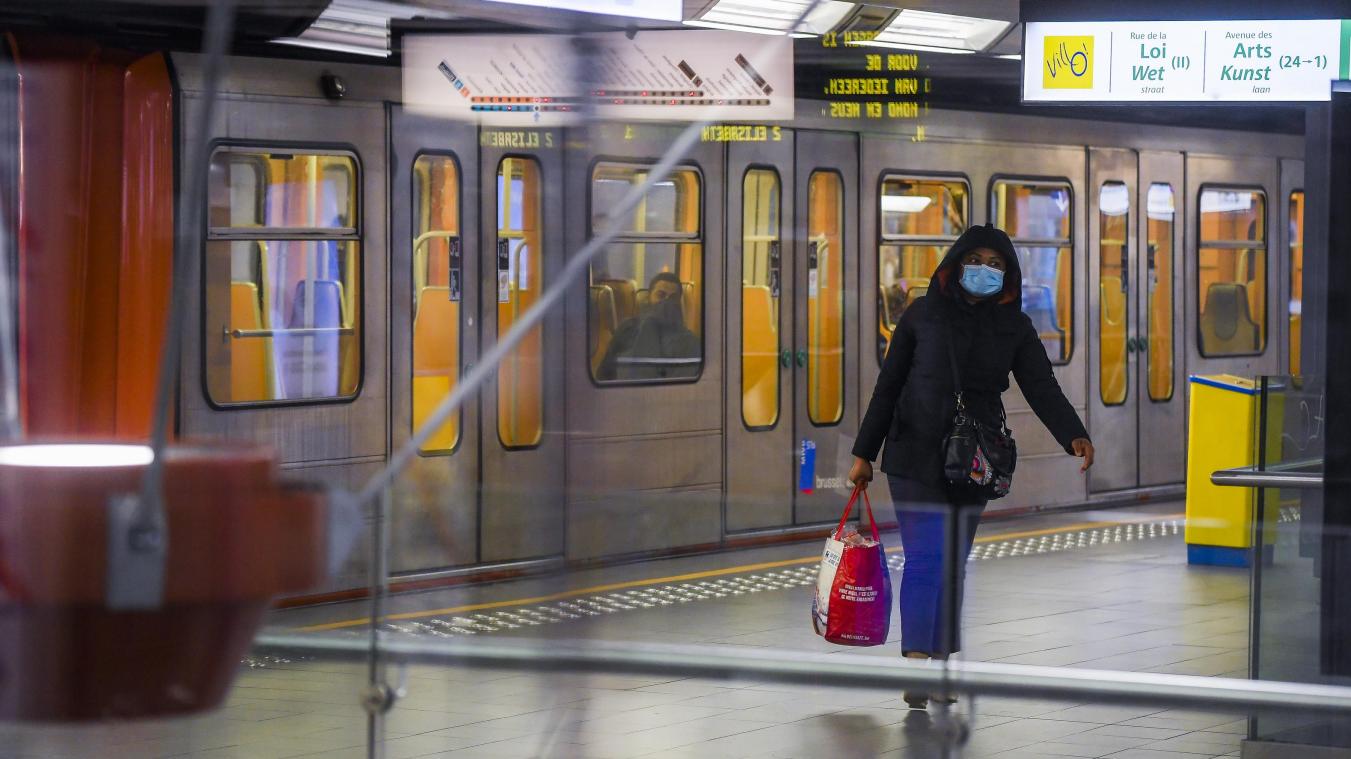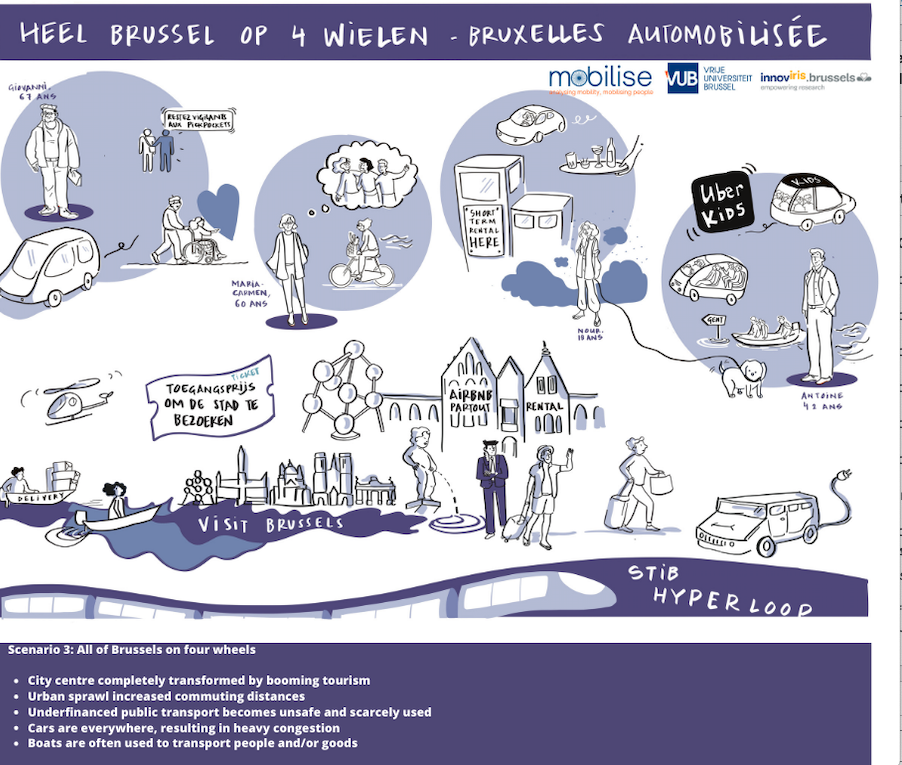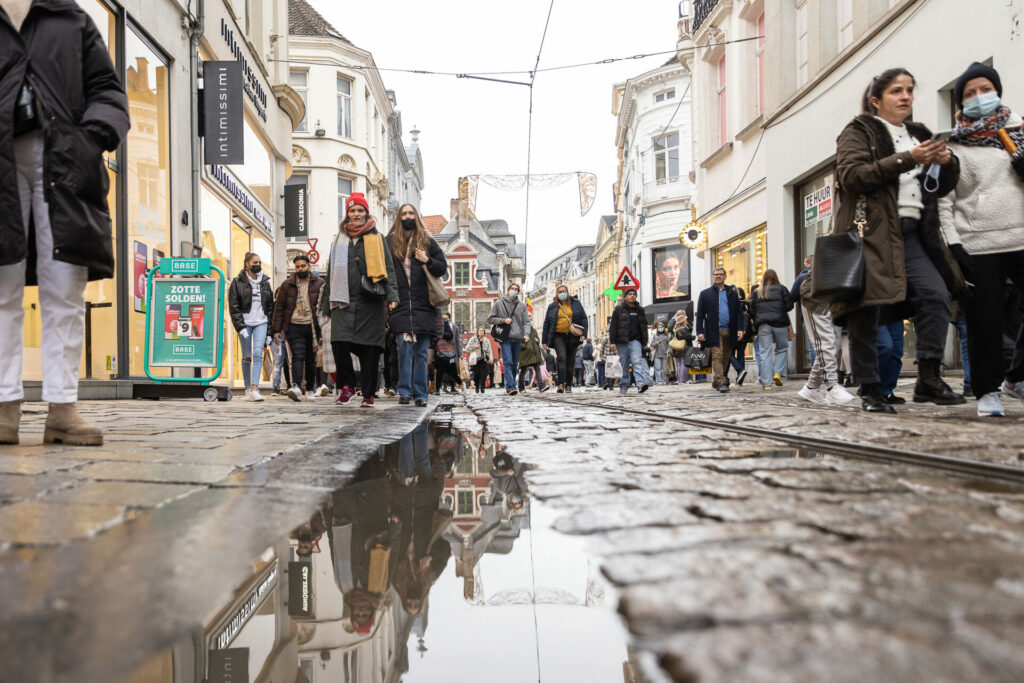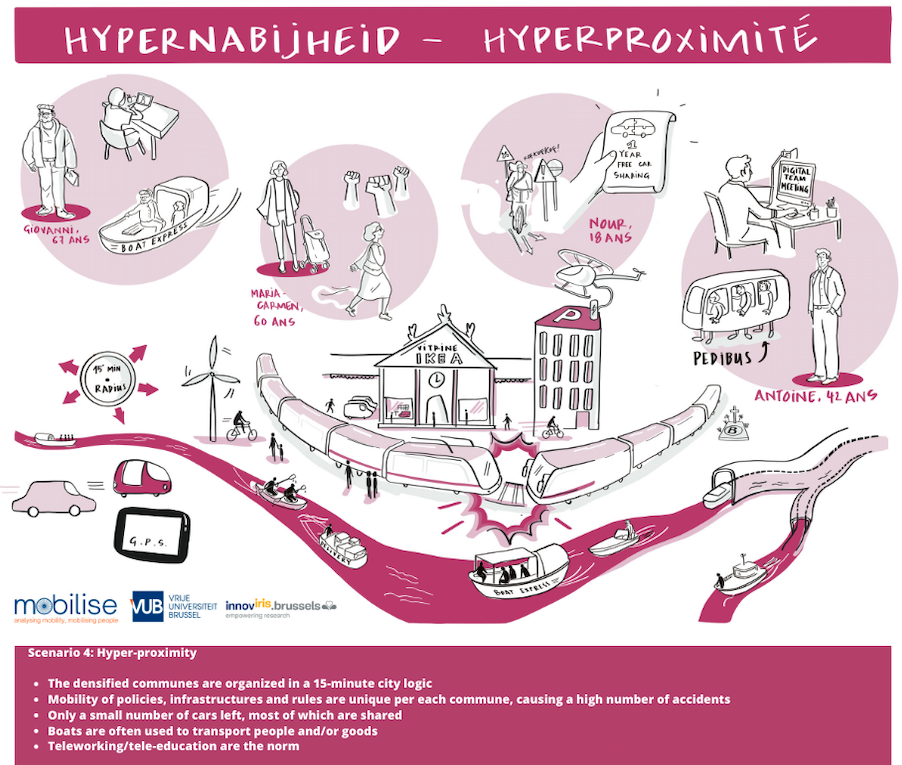How livable will Brussels be in 2050? That is the question a team of researchers from the Vrije Universiteit Brussel (VUB) set out to answer, or at least visualise, by drawing up four possible scenarios for Brussels mobility in 2050.
The VUB's research as part of the Remobilise project relies on innovative participatory research methods to map four possible scenarios for 2050. These range from near-certain transformation so of the region's street use to rather less likely "mega drones" that might make deliveries.
"The future does not always develop as we expect. The pandemic reminded us of that once again," said Sara Tori, PhD researcher and one of the project's authors. As a result of the health crisis the use of public transport dropped and there was a sudden shift to home working.
"We can't only predict a single future and have to consider multiple scenarios and prepare for each. This helps us better anticipate and improve urban resilience."

The pandemic resulted in a drop in the number of commuters on public transport. Credit: Belga
The four scenarios were the result of consultations and surveys by 51 experts from the mobility sector such as STIB and TEC, the Port of Brussels and the FPS Mobility and Transport and workshops with the Cyclists' Union, Walk.Brussels and the Sustainable Mobility Network.
Researchers aimed to survey many different parties to understand how they foresee daily routines changing for different residents. This takes into consideration the full socio-demographic range and the possible challenges that each or all might face.
The project also considered factors such as tourism, car use, the integration of Brussels municipalities and the future use of public transport.
The future told through fiction
The four scenarios, which have been visualised in cartoon illustrations, depict the daily routines of four characters from different socio-demographic groups. They differ in age, place of residence, marital status, number of children, occupation and income.
One is a resident of Auderghem with a high income and three children; another is an 18-year-old student from Saint-Gilles; one is a single 60-year-old living in the city centre; the fourth is a divorced man of 67 with older children and living in Saint-Josse. Except for the first, all have relatively low income.
Their distinct characteristics and backgrounds help to better comprehend how the changes in mobility systems could affect the lives of different socio-demographic groups.
In one scenario one titled "United Greater Brussels," a hyperloop train to Waterloo provides a quick escape from a densely built-up city centre with little space for greenery.
In another, titled "Maximum Freedom", a metro station is repurposed as a fitness centre, as public transport is barely used due to ongoing security problems. Such a situation would see cars become the dominant method of transport.
The four scenarios:

Images from VUB research Remobilise
Which way are we moving?
The project will now focus on policy measures to address the challenges identified in the scenarios. The Remobilise software tool, which will generate policy actions based on user-specified conditions, will then be released by the end of 2024.
"The software aims to include both external uncertainties, as in the case of the scenarios, and internal policy variables, to then start looking at what the possible actions would be," Tori explained.
With this, the researchers are directly addressing policymakers to further develop urban mobility policies.




